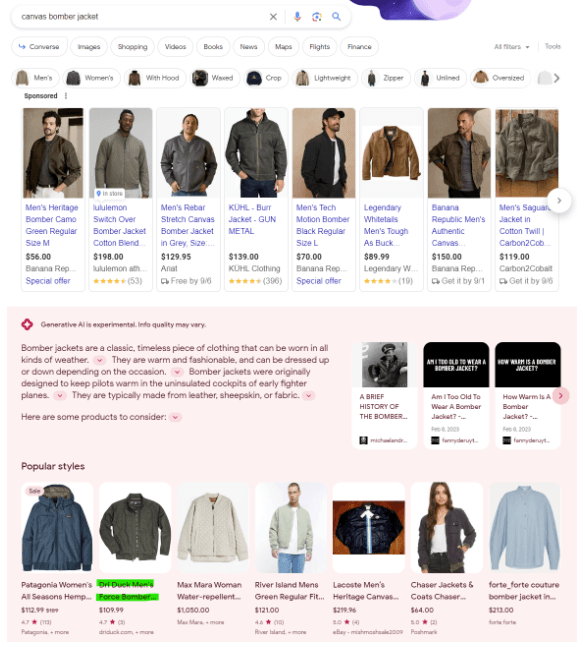The advancement of AI language bots has significantly influenced the way users interact with search tools like Google and Bing. As these AI-driven platforms guide users more seamlessly towards answers, search behaviors are evolving.
This development is pushing search campaigns to be even more bottom-funnel, aligning more closely with the ready-to-purchase intentions of users. As platforms such as Google Ads and Microsoft Advertising continue to innovate in implementing AI into search engines, the potential emergence of new Paid Media ad formats is on the horizon, driven by a motivation to maintain free access for users.
This shift could provide advertisers with a new dimension of contextual data, establishing a new era of hyper-accurate targeting.
How is AI Currently Used in Paid Media Campaigns?
Before diving deep into the possibilities of AI language models in the realm of paid media, it's important to understand where we currently stand with AI in digital advertising.
One of the most successful examples of AI in paid media is Google's Performance Max Campaigns. Utilizing Google's machine learning, these campaigns auto-optimize across all Google advertising platforms like Search, YouTube, and Display.
By predicting user behavior and adjusting strategies in real-time, they maximize advertising outcomes based on the individual. This AI-driven method by Google offers a glimpse into the future potential of digital advertising as we explore the possibilities of language models in paid media.
Another innovative launch from Google is their Search Generative Experience (SGE) for those who have joined Google Labs. This feature uses generative AI to help bring relevant search results to the user in a conversational manner. In our research, Google Ads (“sponsored listings”) is appearing under the search bar while SGE results appear under the sponsored listings and above organic search listings.
AI Language Bots and the Evolution of Search
While still new, the implementation of AI language bots has recalibrated the function of search engines. No longer are users using search engines only as a way to research topics through a question, but can serve as interactive guides, offering contextual answers and assisting users in real-time.
For advertisers, this translates to an audience that is better informed and primed for purchasing. As such, search campaigns will need to evolve, focusing more on the decisive stages of the consumer journey, where conversion intent is at its height.
Potential for New Paid Ad Formats
With the influence of AI language bots on search platforms growing, there's a plausible future where platforms like Google Ads and Microsoft Advertising introduce innovative paid ad formats.
Given their vested interest in keeping platforms free for users, monetizing through enhanced advertising experiences becomes even more critical.
These new ad formats, potentially embedded seamlessly within AI-driven interactions, will not only capture users' attention more effectively but also offer a richer engagement experience.
The Potential of Contextual Data
As AI continues to shape user interaction with search platforms, the resulting wealth of contextual data becomes a goldmine for advertisers.
Understanding user inquiries, their contextual backstories, and the AI's responses offers a more profound insight into consumer mindset and intent. This could assist advertisers with targeting capabilities that are eerily precise.
The Potential of Dynamic Personalization
While AI holds enormous potential for crafting highly relevant ad campaigns, it also offers the possibility of allowing campaigns and creative to even be optimized at a personal level. As AI language models become more advanced and widely used, they likely will be able to analyze how an individual speaks, types, or even processes information.
With the use of generative media from AI, such as images; along with conversational AI, advertisers could have the ability in the not too distant future to tailor ads based on an individual rather than a cluster of people in an audience segment.
Imagine having AI generate an image and ad copy all on its own, based on a specific individual’s mood or even favorite color.
Seismic Digital's Take on the Future of Paid Media
The connection between AI language bots and search platforms is on the verge of rewriting the rules of digital advertising. While this could promise a new dimension of targeting advantages for advertisers, it also presents challenges that must be navigated with expertise and foresight.
It’s evident by the large influxes of financial investments made from these advertising platforms into AI research and development, that platforms are likely looking to evolve the paid media business model, rather than destroy it.
Digital advertising agencies need to stay ahead of these developments, ensuring their strategies are quick and responsive to a landscape that's in a state of constant change. The future of paid media is not just about reaching audiences; it's about understanding them on a level we've never witnessed before.
